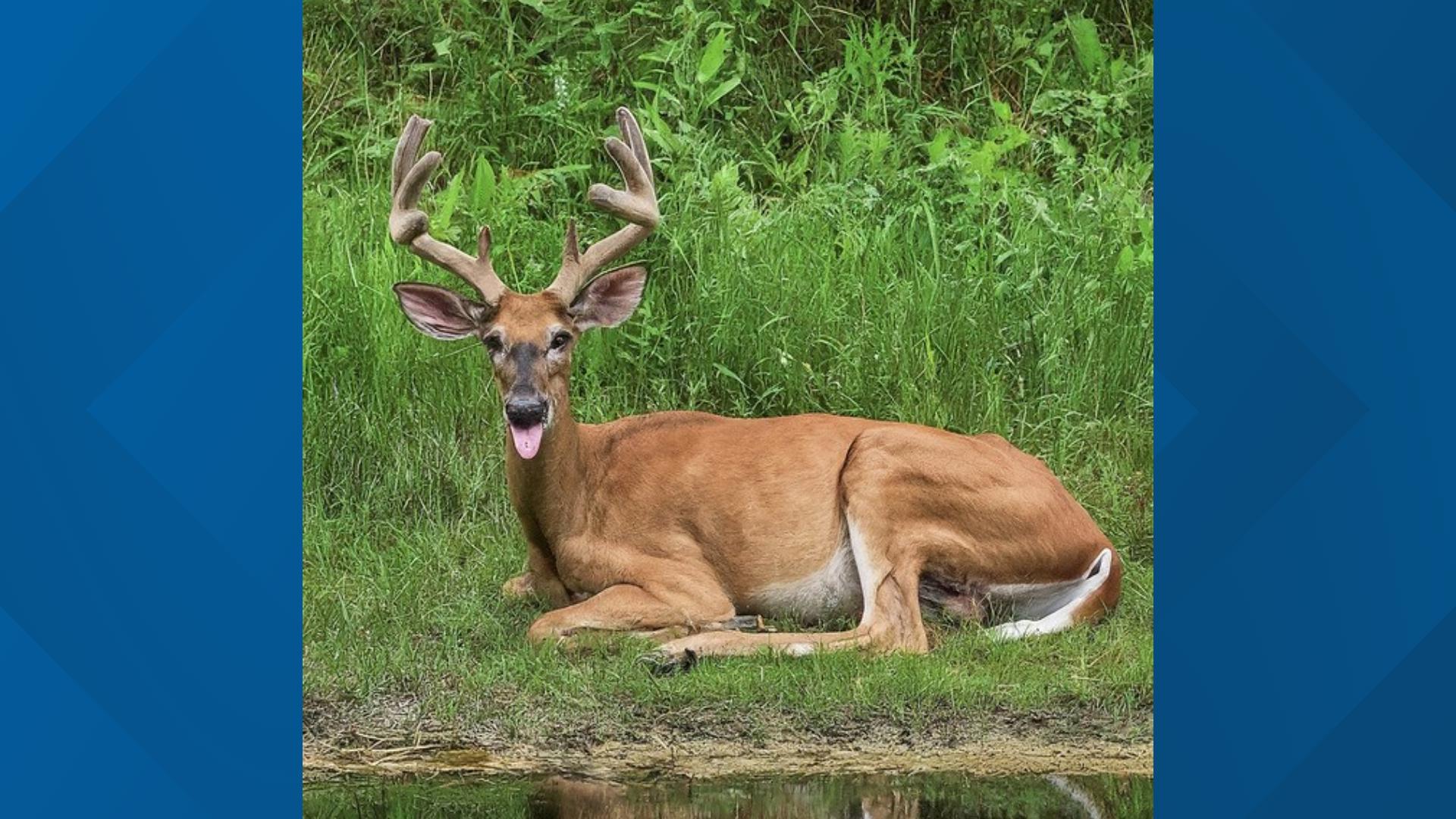IOWA, USA — The Iowa Department of Natural Resources wants your help tracking hemorrhagic disease among the state's deer population.
Hemorrhagic disease, also commonly referred to as EHD or Bluetongue, is an insect-transmitted disease that's been impacting the state's deer populations for over a decade. Iowa's worst outbreak was in 2012, followed by its second-worst outbreak in 2023.
EHD has previously gone underreported. The DNR is hoping more consistent tracking will provide a clearer picture of its impact on the state.
So what is EHD?
Biting midges will feed on an infected deer, then go bite another one, thus transmitting the disease. Interestingly, a deer can incubate the disease for seven to ten days before clinical signs start showing.
"So the bite that infected them happened about a week prior to when you start seeing those deer dying on the landscape," Rachel Ruden, Iowa DNR State Wildlife Veterinarian, said.
Within eight to 36 hours of clinic signs, deer in Iowa will often die.
The deer's organs will start to shut down and the animal will often get quite hot, forcing them to seek out water. Consequently, many of the deer that die from EHD are found in and around water sources.
Most mortalities generally occur between July and September, although that can stretch later, depending on how long warm weather holds out for.
Outbreak severities vary from year to year. There is no effective treatment or known prevention.
In 2023, more than 2,000 deer, throughout 76 Iowa counties, were reported dead. But Ruden says it's very likely the true number is much higher.
"We have been relying on the public for basically all of our wildlife diseases," Ruden said. "Most of our state is in private land so those landowners seeing dead deer are really valuable."
Now, the state has launched a new online reporting system. If you spot a dead deer, you are encouraged to fill out the online form. Individuals may submit multiple reports each year. The online tool also allows the public to see where other reports have been submitted.
"This is really to provide a finer granularity to our deer monitoring across the state and then allows us to put the different checks and balances in place, in a more meaningful way," Ruden said.
Tune into The Current from 4 to 5 p.m. on weekdays to catch live interviews impacting you, your family and your hometown as well as all of the biggest headlines of the day.

